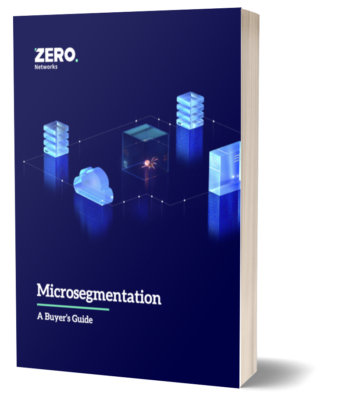Congrats! You made the fantastic decision to implement a Microsegmentation solution at your organization. You understand the tremendous benefits Microsegmentation offers in myriad cybersecurity use cases, from blocking ransomware and breaches to passing penetration tests to complying with cybersecurity insurance requirements.
However, you also know it’s impossible to implement Microsegmentation manually, and you know it can be difficult to evaluate the difference between one microsegmentation solution and the next. Many vendors will throw around the latest buzzwords and make claims that are hard to assess. In reality, not all microsegmentation solutions live up to this hype.
Our recently released Microsegmentation Buyer’s Guide introduces the ten critical factors to consider when evaluating a network segmentation solution. In this post, we’ll share five of them.
Download the full guide to read more about these factors, discover the complete list, and learn more about Microsegmentation.
5 Critical Factors when Evaluating a Microsegmentation Vendor
- It should be easy to deploy: Historically, deploying a microsegmentation solution meant agents and painstakingly complicated configurations. But CISOs and security teams need to show quick wins, and fast deployment cycles are no longer optional. This means a good solution promises fast deployment, no agents, and no lengthy configurations.
- It should offer heterogeneous segmentation: Today’s segmentation solutions often force you to decide between sequestering users, clients or servers. A modern approach should do it all–taking a heterogeneous approach to asset segmentation. In addition, it should offer a single point of control, both in cloud and on-premises environments.
- It should be IT/OT agnostic: OT infrastructure is common in modern enterprises. Typically, OT environments require a separate approach to segmentation. For a microsegmentation solution to truly succeed in today’s world, it should cover both OT and traditional IT environments.
- It should offer ‘continuous segmentation’: Modern networks are dynamic, which means there’s no time to discover everything in your environment—by the time you do, it has changed. Therefore, your microsegmentation solution of choice should automatically and continuously observe network access to identify the network permissions necessary for day-to-day activity.
- There should be no single points of failure: The old adage “you’re only as strong as your weakest link” no longer applies. An effective solution will have no single point of failure, to make sure availability is close to 100%.
For a microsegmentation project to truly succeed, it should meet these criteria, as well as five additional ones included in our buyer’s guide to microsegmentation. Download it here.



